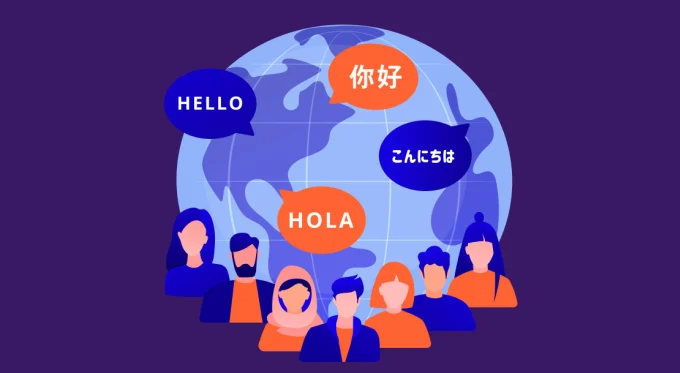In an increasingly interconnected world, the ability to communicate across languages is paramount. Transliteration is a key aspect of this communication, allowing the conversion of text from one writing system into another. This article delves into the intricacies of transliteration, its significance in various fields, and its applications in today’s global landscape.
Understanding Transliteration
Definition of Transliteration
Transliteration is the process of converting text from one script to another while maintaining the original pronunciation. Unlike translation, which focuses on meaning, transliteration preserves the sounds of the source language in a different writing system. This makes it particularly useful for names, places, and terms that do not have direct equivalents in the target language.
The Difference Between Transliteration and Translation
To clarify, let’s differentiate transliteration from translation:
- Transliteration: Converts letters and sounds from one alphabet to another. For example, the Russian name “Москва” is transliterated to “Moskva.”
- Translation: Converts meaning from one language to another. The same Russian word “Москва” translates to “Moscow” in English.
Both processes serve unique purposes and are often used in tandem, especially in multilingual contexts.
The Importance of Transliteration
Facilitating Communication
Transliteration plays a crucial role in facilitating communication among speakers of different languages. It allows individuals to read and pronounce foreign names, places, and terms without requiring them to learn a new script. This is particularly important in fields such as international business, diplomacy, and tourism.
Preserving Cultural Identity
Names and terms often carry significant cultural weight. Transliteration helps preserve these identities by maintaining the original sounds and forms. For example, the name of a prominent figure or a historical location is often transliterated to retain its cultural significance in different languages.
Enhancing Accessibility
In our digital age, transliteration enhances accessibility by allowing users to input and search for terms in their own script while still retrieving relevant information in another language. This is particularly useful in online platforms, social media, and search engines, where users may prefer their native script but need information in another language.
Systems of Transliteration
Phonetic vs. Graphemic Transliteration
Transliteration can be categorized into two main types:
- Phonetic Transliteration: This method focuses on the sounds of the source language. The goal is to reproduce the pronunciation as closely as possible in the target language. For instance, the Arabic word “سلام” is phonetically transliterated to “salaam.”
- Graphemic Transliteration: This approach emphasizes the visual representation of the text. It aims to maintain the appearance of the original script while adapting it to the target writing system. An example would be transliterating the Greek word “Αθήνα” as “Athena.”
Popular Transliteration Systems
Several standardized systems have been developed to ensure consistency in transliteration. Some of the most widely used include:
- ISO 843: An international standard for the transliteration of Greek characters.
- ALA-LC Romanization: Used for various scripts, including Arabic, Cyrillic, and Hebrew, this system is widely adopted by libraries and academia.
- Library of Congress Romanization: Similar to ALA-LC, this system provides guidelines for transliterating various languages, primarily for library cataloging purposes.
The Role of Context
Transliteration systems can vary based on context. For instance, a name may be transliterated differently in academic texts compared to marketing materials, reflecting the intended audience and purpose. It’s crucial to choose the appropriate system for the context to ensure clarity and consistency.
Applications of Transliteration
In Literature and Scholarship
Transliteration is widely used in literature and scholarship, allowing researchers and readers to access texts from various cultures. For example, academic works on Sanskrit texts often utilize transliteration to present original verses alongside translations, providing insights into the phonetics and rhythm of the original language.
In International Law and Diplomacy
In legal contexts, accurate transliteration is essential for documenting names of individuals, organizations, and locations. International treaties and agreements often require precise transliterations to ensure clarity and avoid misunderstandings. Diplomats rely on transliteration when discussing issues involving multiple languages, helping to foster effective communication.
In Technology and Digital Media
With the rise of the internet, transliteration has become increasingly relevant in technology. Many search engines and social media platforms utilize transliteration algorithms to enhance user experience. Users can search for content using their native script while still receiving results in various languages.
Challenges in Transliteration
Ambiguities in Pronunciation
One of the primary challenges in transliteration is the ambiguity in pronunciation across different languages. For instance, the English “th” sound does not exist in many languages, leading to different transliterations for words like “theater” or “thanks.” This inconsistency can create confusion for users who are unfamiliar with the original language.
Variations in Language Dialects
Dialects within the same language can also affect transliteration. For example, the name of the capital city of China is transliterated as “Beijing” in Mandarin but may appear differently in Cantonese. These variations necessitate careful consideration of the target audience and their linguistic background.
Lack of Standardization
While various transliteration systems exist, there is often a lack of uniformity in their application. Different institutions and contexts may adopt different systems, leading to discrepancies that can confuse users. This lack of standardization highlights the need for greater awareness and consistency in transliteration practices.
The Future of Transliteration
Advancements in Technology
As technology continues to advance, the role of transliteration will likely evolve. Artificial intelligence and machine learning algorithms are increasingly being used to develop more accurate and context-aware transliteration tools. These technologies hold the potential to improve transliteration accuracy, especially in real-time applications like translation apps.
The Role of Globalization
Globalization is driving increased interaction among languages and cultures, further underscoring the importance of transliteration. As more people communicate across linguistic boundaries, the demand for accurate and accessible transliteration will continue to grow. This trend will likely result in the development of new systems and tools to meet the needs of diverse audiences.
Education and Awareness
Incorporating transliteration into language education can enhance learners’ understanding of pronunciation and script. By emphasizing the importance of transliteration, educators can help students navigate multilingual environments with confidence, fostering a greater appreciation for linguistic diversity.
Conclusion
Transliteration serves as a vital bridge in our increasingly interconnected world, facilitating communication, preserving cultural identity, and enhancing accessibility. As we navigate a landscape marked by linguistic diversity, the importance of transliteration will continue to grow.
The challenges faced in transliteration highlight the need for greater awareness and standardization, particularly in an era of rapid globalization and technological advancement. By embracing the complexities of transliteration, we can foster clearer communication and deeper understanding among cultures, ensuring that language remains a tool for connection rather than division.



